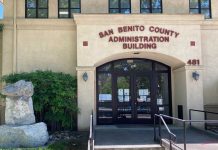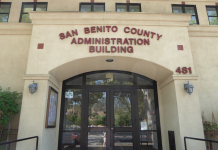The final downtown plan
– prepared by RBF Consulting Inc. and costing $190,000 –
envisions a revitalized downtown featuring new apartments, parking
and a more uniform look to current buildings.
HOLLISTER
City officials and the Hollister Downtown Association hope to get the newest downtown plan approved by the city council and implemented shortly thereafter.
The final downtown plan – prepared by RBF Consulting Inc. and costing $190,000 – envisions a revitalized downtown featuring new apartments, parking and a more uniform look to current buildings.
HDA Executive Director Brenda Weatherly is excited about the completed plan and said it gives “some goals and ideas on how to revitalize our downtown.” Mayor Doug Emerson said the plan is “very aggressive” and that he’s “really happy” with it. Weatherly also added that the plan cannot be implemented until the city council adopts it. Her hopes are for an October approval.
The HDA has played an important role in the implementation of this project. As a nonprofit, the HDA can only lend its support to the city. But Weatherly said they are willing to aid in any way possible – including getting public input. Once the city approves the plan, they will “then work with the city in implementation of catalyst projects,” said Weatherly.
According to the final plan, there are four catalyst projects that should be undertaken first. The Plaza Project, also known as the 400 block project, includes a new parking configuration on San Benito Street and transit routes. Both the Granada Theatre and Pendergrass Hotel projects call for these buildings to be restored as well as returned to original uses. The Sally Street project “is envisioned to redevelop with non-industrial uses, such as residential and mixed-use developments,” according to the final plan.
One of the biggest obstacles for the implementation of this plan is funding for the estimated 10-year project. The plan says that “funding and financing for projects will require comprehensive and creative financing approach,” which could come from a variety of state and federal sources.
Some possible agencies include the federal Economic Development Administration, the city general fund and the city redevelopment agency. Another possible source for funding could include private donations. Weatherly pointed out how the plan suggests that funds come from a combination of public and private sources.
Only after the city has sent out RFPs and received bids, however, will they know what kind of money will be needed.
To reach success, Emerson believes that businesses must be committed.
“This has to be a partnership – there has to be some buy in by the businesses.”
Emerson said that of the four catalyst projects, the city should pick one and get started on it. He and Weatherly would both like to see the 400 block catalyst project be the first undertaking of the downtown plan.
The final plan calls for the current green space at the corner of San Benito and Fourth streets to be converted into “a public plaza with retail uses, outdoor dining and seating areas, and outdoor gathering or lawn spaces for community events.” Weatherly added that this catalyst project is a good example – both visually and financially – at a prime location.
“It is a very important piece of land.”
RBF urban designer and planner Jason Jones said his favorite part of this plan is its comprehensive nature. He also said it’s both promotional and organizational.









